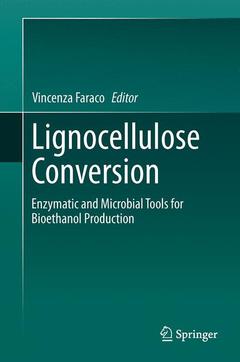Description
Lignocellulose Conversion, Softcover reprint of the original 1st ed. 2013
Enzymatic and Microbial Tools for Bioethanol Production
Coordinator: Faraco Vincenza
Language: English
Subjects for Lignocellulose Conversion:
Publication date: 07-2015
Support: Print on demand
Publication date: 06-2013
199 p. · 15.5x23.5 cm · Hardback
Description
/li>Contents
/li>Comment
/li>
Introduction: Potential of Cellulosic Ethanol.- Sources for Lignocellulosic Raw Materials for the Production of Ethanol.- The Pretreatment Step in Lignocellulosic Biomass Conversion: Current Systems and New Biological Systems.- The Saccharification Step: Trichoderma Reesei Cellulase Hyper Producer Strains.- The Saccharification Step: the Main Enzymatic Components.- Extremophilic (Hemi)cellulolytic Microorganisms and Enzymes.- The Alcohol Fermentation Step: the Most Common Ethanologenic Microorganisms Among Yeasts, Bacteria and Filamentous Fungi.- Other Ethanologenic Microorganisms.- Consolidated Bioprocessing for Improving Cellulosic Ethanol Production.
Highlights the latest enzymatic and microbial tools for lignocellulose conversion
Describes the route towards second generation bioethanol production
All authors are eminent scientists well known for their work and expertise in the field?
Includes supplementary material: sn.pub/extras




